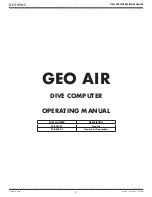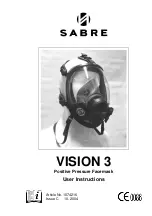
Section 13: LPT library function reference
Model 4200A-SCS Parameter Analyzer Reference Manual
13-192
4200A-901-01 Rev. C / February 2017
sweepf
This command performs a frequency sweep.
Usage
int sweepf(int
instr_id
, double
startf
, double
stopf
, long *
NumPts
, double
delaytime
);
instr_id
The instrument identification code of the 4210-CVU:
CVU1
startf
Initial frequency for the sweep
stopf
Final frequency for the sweep
NumPts
Query the number of sweep points
delayTime
Delay before each measurement (0 to 999 s)
Details
This command is used to perform a frequency sweep. The 4210-CVU provides test frequencies from
1 kHz to 10 MHz in the following steps:
•
1 kHz through 10 kHz in 1 kHz steps
•
10 kHz to 100 kHz in 10 kHz steps
•
100 kHz to 1 MHz in 100 kHz steps
•
1 MHz to 10 MHz in 1 MHz steps
The frequency points to sweep are set using the
startf
and
stopf
parameters. If an entered value
is not a supported frequency, the closest supported frequency will be selected (for example, 15 kHz
input will select 20 kHz). The sweep can step forward (low frequency to high frequency) or it can step
in reverse (high frequency to low frequency).
When the sweep is started, the 4210-CVU steps through all the supported frequency points from start
to stop. For example, if the start frequency is 800 kHz and the stop frequency is 3 MHz, the CVU
steps through the following frequency points: 800 kHz, 900 kHz, 1 MHz, 2 MHz, 3 MHz.
The
NumPts
query returns the total number of sweep points. For the above example,
NumPts
returns
5
.
The
delayTime
parameter sets the delay that occurs before each measurement. Note that there is
an inherent system overhead delay on each frequency step of the sweep.
Use the
forcev
command to set the DC bias level and
setlevel
command to set the AC drive
voltage.
Use the
dsweepf
command to perform a dual frequency sweep.
















































